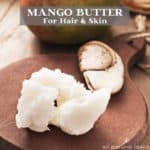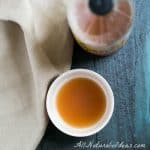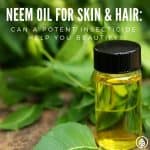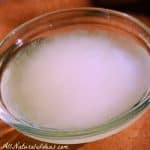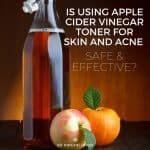A DIY baking soda face mask can make your skin feel fresh and clean. But is it safe to use on sensitive skin? Find out if you should be adding in this simple beauty routine.
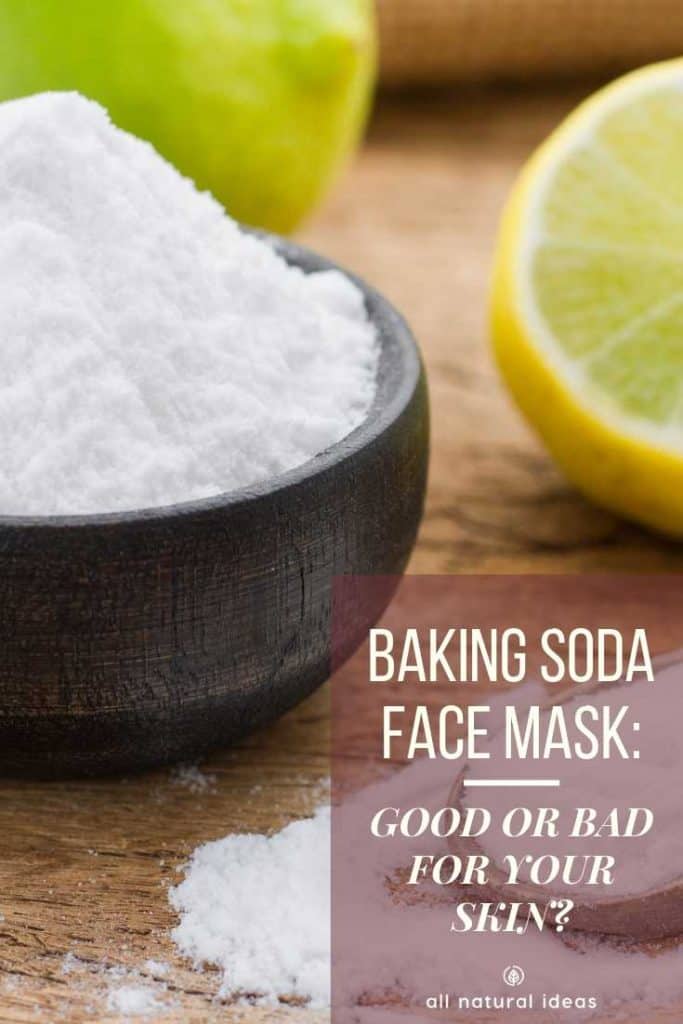
Table of contents
Is Baking Soda Good For Your Face?
Searching for a face mask scrub recipe like this one? Nothing wrong with checking out how to make one. However, you should be wondering if it’s safe to apply sodium bicarbonate to your face in the first place.
No matter how persuasive the testimonial, don’t blindly trust a blogger when it comes to your skin. What might work for one person’s skin might not work for you. Or worse, it could make your skin worse, even causing damage.
So what do the experts have to say about baking soda for skin care? Is it safe and effective?
The short answer is maybe.
Let’s start with some research that supports using a baking soda face mask….
For Fishy, Scaly Skin
Leonard Milstone, a professor of dermatology at Yale University, makes a convincing case in support of using sodium bicarbonate. In a letter written by Milstone to the editor of a dermatology journal, he references a study from Germany.
The study successfully treated more than 300 patients with the skin condition, ichthyosis. This condition is present in some people from birth. It causes the skin to become dry and rough like fish scales.
Bicarbonate baths are very useful for exfoliating the scales, says Milstone in the letter. “Having been professionally interested in ichthyosis for a number of years, I was stunned that this simple therapeutic suggestion was completely foreign to me.”
The simple suggestion Milstone refers to: just adding baking soda to bath water.
Surprisingly, Milstone says he consulted with colleagues around the world but none were familiar with this simple skin care solution.
Milstone goes on to say that he found texts from over 100 years ago that recommend taking baking soda baths.
However, over the decades, the professional recommendation of taking bicarbonate baths vanished.
But is it really the bicarbonate that works for people with fishy, scaly skin? And if this remedy can work for people with serious skin issues such as ichthyosis, baking soda for face acne should work wonders, too, right?
Water Quality: More Important For Your Face Than Baking Soda?
Well, first Milstone brings up an interesting point. He suggests that the source of the water is very important. For example, when people with very scale skin visit the seashore for a week, they report their skin is much better. However, visiting a fresh-water lake doesn’t have the same effect.
So is it the salt water more than anything that improves the skin? And if you’re planning on using a baking soda face mask, should you just use sea salt and not use the bicarbonate?
“Most dermatologists assume it is the salt,” says Milstone. But he goes on to ask, “Could it be the pH?”
Two handfuls of baking soda raises the pH of a bathtub filled with tap water from 5.5 to 7.9. This brings the pH level closer to that of ocean water, which is usually above 8.1.
Over the years, Milstone suggests that dermatologists may have developed a bias against alkaline pH. (Anything over 7.0 on the pH scale is alkaline.)
Dermatologists warn that strong alkalis, such as ammonia and lye, are too harsh on the skin. (Most soaps contain lye and have pH above 9.5.)
“We may have to rethink our opposition to alkaline pH in specific situations,” says Milstone. He argues that there is no research that says that the “mildly alkaline nature of dissolved sodium bicarbonate [baking soda] is either irritating or harmful.”
Moreover, Milstone says being in the ocean for a long time is generally not irritating. Same goes for natural spring water spas with alkaline water.
Milstone concludes his letter suggesting that using baking soda followed by a mild skin softener is likely to be safe. And for people with serious scaly skin, it can dramatically help.
Score one point for using baking soda face masks.
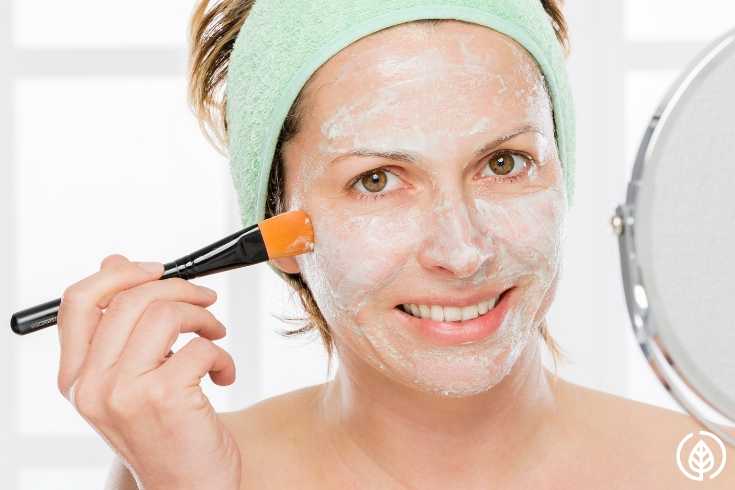
Beverly Hills Doctors Say Don’t Use A Baking Soda Face Mask!
But not all experts are on board with Milstone’s conclusion.
Take for instance, Beverly Hills MD. This plastic surgery business has a blog post that provides three reasons not to use baking soda for acne.
The writer of the post argues bicarbonate is not good for healthy skin because it:
- Upsets the skin’s natural pH
- Over exfoliates the skin
- Irritates the skin
Now let’s briefly go through each of the three arguments here….
Upsets The Skin’s Natural pH
Baking soda can cause harm to your skin barrier, says Beverly Hills MD. The skin barrier is the outermost layer of the skin. It helps retain moisture. And it prevents bad bacteria from entering deep into the skin. Because of this, the skin barrier plays a big part in acne treatment and prevention.
The very outer surface of the skin barrier is called the acid mantle. The post on the Beverly Hills MD website says that healthy skin has a pH between 4.5 to 5.3. And if you use baking soda, the experts caution, it has the potential to upset the natural pH balance, causing dry, irritated skin and acne breakouts.
But perhaps the author of the post isn’t seeing the whole picture. It’s true that sodium bicarbonate is much higher on the pH scale than the acid mantle. However, it’s also been proven in several studies to have antibacterial property.
And like Milstone, the Yale dermatologist suggests, if you use a mild emollient after doing a face scrub, baking soda won’t damage your skin.
Over exfoliates the skin
And now let’s analyze the claim by Beverly Hills MD suggesting that a baking soda face mask can over-exfoliate the skin. The author of the post says baking soda is too abrasive. It causes irritation, dilated blood vessels, and hyperpigmentation.
But again, if you apply a little baking soda and water to your face for a few minutes, is that really going to throw your skin’s pH out of whack?
Let’s revisit the quote by Milstone: There’s no research suggesting that the “mildly alkaline nature of dissolved sodium bicarbonate [baking soda] is either irritating or harmful.”
The keyword in Milstone’s quote is “mildly.” You see, when you add tap water to baking soda, the pH of the soda will go down. That’s because tap water is acidic. It depends where you live how acidic the tap water is. But most tap water is below a neutral pH (7.0), making it acidic.
And even if you were to use pure, 7.0 water, the pH of the baking soda would be reduced.
Irritates the Skin
Beverly Hills MD’s third claim says using it may cause skin problems on contact. The post suggests it’s not good to use if you have acne. However, perhaps the problem isn’t merely an external one.
If you have acne, it could be because you have poor gut health. Maybe you need a quality probiotic.
Perhaps your stomach doesn’t have enough gastric juice to break down nutrients? (You can buy a supplement called “HCL” or hydrochloric acid to increase your stomach acid.)
And maybe you have leaky gut syndrome? Or maybe your hormones aren’t balanced.
Are you really concerned that baking soda might not be the best remedy for acne because of the pH factor? If so, you can counteract the pH by mixing baking soda with apple cider vinegar or lemon juice.
Maybe the dermatologists who are against using soda or sodium bicarbonate as a facial wash are too hung up on pH numbers. By nature, sodium hydrogen carbonate (another chemical name for it) is a very weak base. And it can actually neutralize both acids and bases.
Perhaps what the anti-baking soda experts should be looking at instead is the holistic approach to acne and skin care in general.
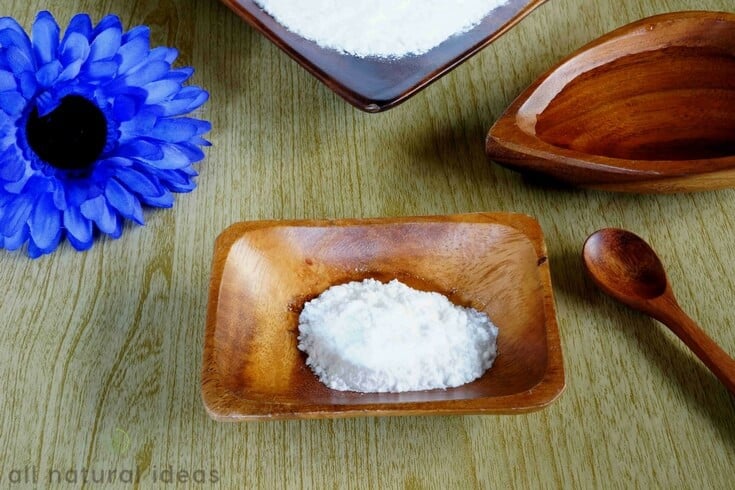
Baking Soda Facial
If you take a look at the skincare products sold in stores, most contain hard to pronounce chemicals. But you don’t have to look much further than your kitchen to find ingredients for your own DIY alternatives.
It’s easy to make your own almond facial scrub and sugar scrub. And, it’s even easier to make a baking soda mask. All you need is baking soda and water!
Baking soda, sometimes called Bicarbonate of Soda, is great for cleaning and baking. It strengthens the power of natural cleaning with hydrogen peroxide. And, it’s the main ingredient for making your own grain free baking powder.
However, I’ve recently discovered that it makes an amazing facial scrub too. Since baking soda is mildly abrasive, it’s a safe exfoliant even for sensitive skin.
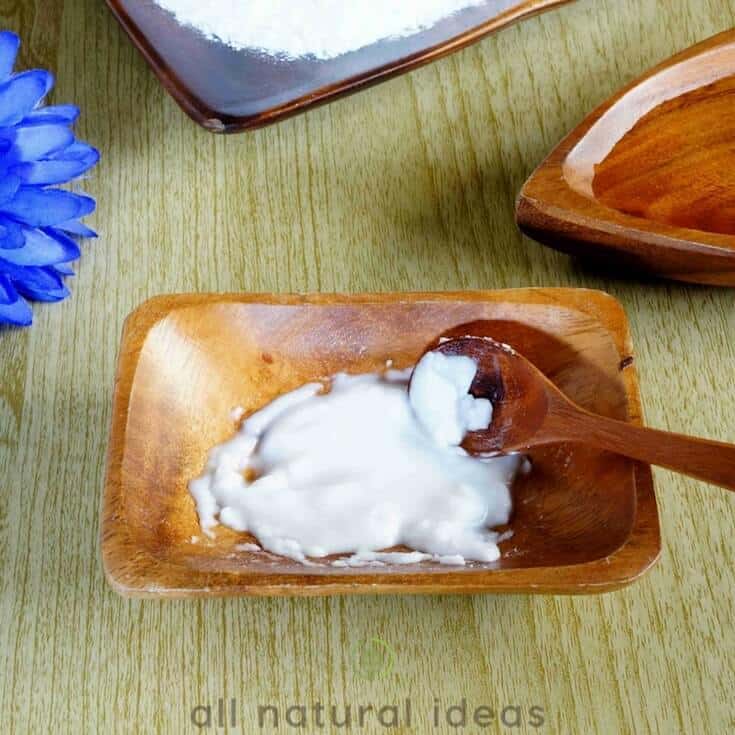
Benefits of a DIY Baking Soda Face Scrub
The baking soda mask also doubles as a facial cleanser. It scrubs the surface of the skin clean as well as lifting dead skin cells and dirt out from the pores. This helps prevent and treat acne.
It gently cleanses the skin just like it does when using it on your kitchen sink or counter. And, you can’t beat the price for this all natural skin cleanser.
Because baking soda cleans so well, it’s important to use a moisturizer after so your facial skin doesn’t get too dry. If you fail to use a moisturizer, the skin can get dry and flakey.
The cleansing power of baking soda makes it perfect for use on acne prone skin. It breaks down oil and dirt within the pores so they don’t cause pimples.
Sodium bicarbonate also has anti-inflammatory, antibacterial, antifungal, and antiseptic properties. So, it’s also a good treatment for rashes, bug bites, and other skin irritations.
I find that a paste of baking soda and water helps relieve the itching and swelling associated with mosquito bites. And, it’s a cheap solution that’s easy and cheap to make.
Baking Soda Face Mask and Scrub Recipe
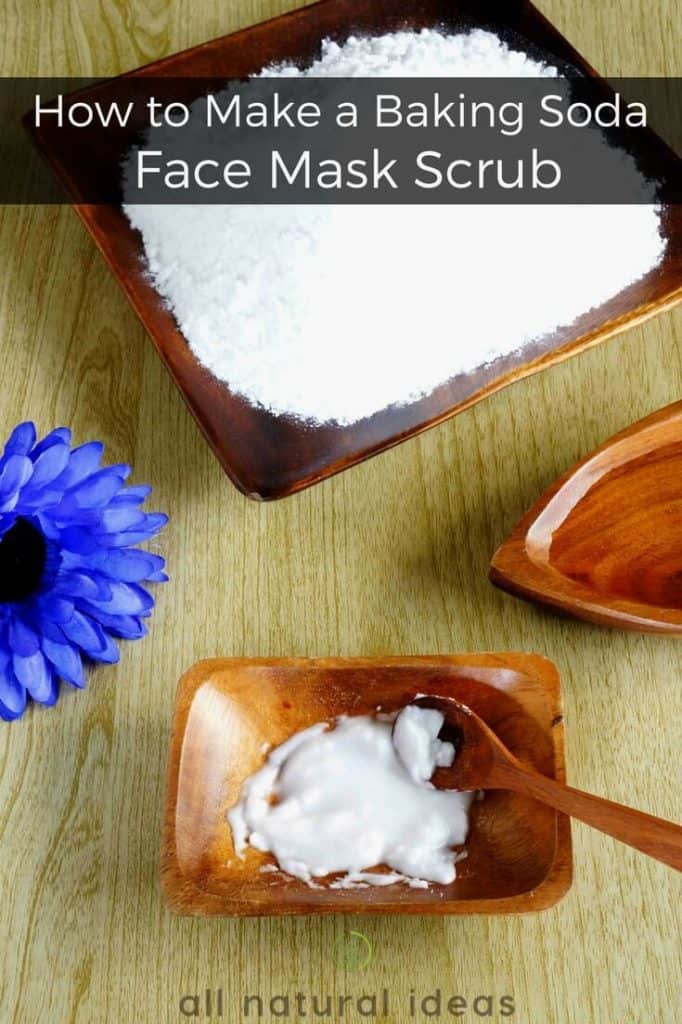
Here’s a super simple recipe to make your own facial mask at home with only two everyday ingredients. Just be sure to use a moisturizer after as it can by drying to the skin.
How do you feel about using sodium bicarbonate on your skin? Let us know by leaving a comment below.
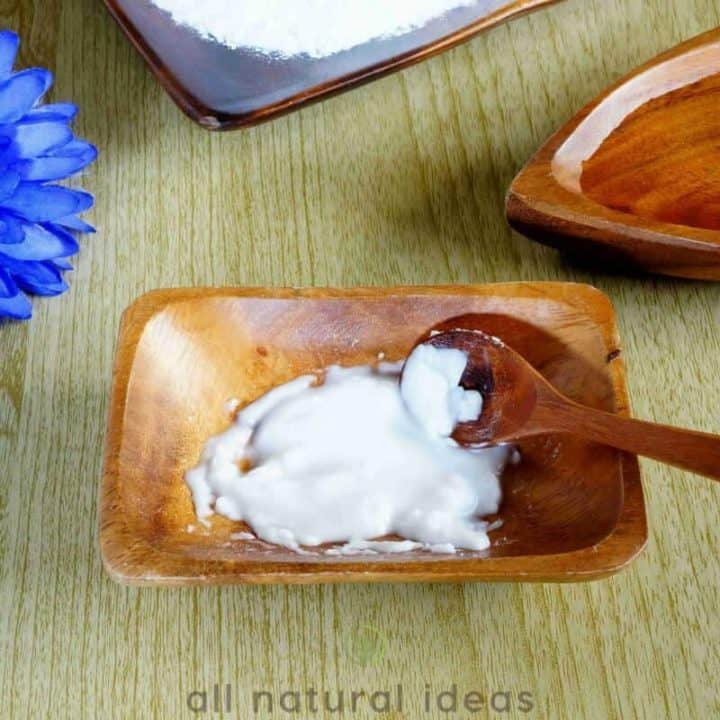
Baking Soda Face Mask Scrub
If you’re looking for the simplest way to use a baking soda face scrub, give this DIY recipe a try. Your skin will feel fresh after use and is safe to use on sensitive skins.
Materials
- 1 Tablespoon baking soda
- water
Tools
- Small Bowl
- Small Spoon
Instructions
- Wet your face with warm water.
- Add a little water to 1 tablespoon of baking soda and massage gently on your skin.
- Leave the mixture on your face for about 3 minutes and then wash it off.
- Pat face dry gently with a clean towel.
Notes
- It’s best to wet the face first and then apply the baking soda with a little more water.
- Applied in a gentle circular motion and then allowed the mixture to sit on the skin.
- Apply a moisturizer like coconut oil after to moisturize the skin.
References
Scaly skin and bath pH: Rediscovering baking soda
Antibacterial activity of baking soda
